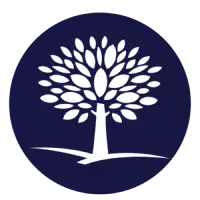When people consider psychedelic substances, ayahuasca is often part of the discussion due to its long history in indigenous spiritual and healing practices. However, just because it has cultural and traditional significance does not mean ayahuasca is without risks. Like other hallucinogens, it has the potential to cause harm, especially if used unsafely or outside of a controlled environment. Understanding what ayahuasca is, its effects, and the potential for misuse is an essential step in staying safe.
What Is Ayahuasca?
Ayahuasca is a psychoactive brew that originates from the Amazon rainforest. It is traditionally prepared by boiling or soaking two main plant components: the Banisteriopsis caapi vine and the leaves of the Psychotria viridis shrub (or similar DMT-containing plants). The vine contains harmine and harmaline, which help make DMT (the psychoactive compound found in the leaves) more bioavailable. When consumed, DMT can cause powerful changes in perception, often resulting in vivid visions and intense emotional experiences.
For centuries, shamans and indigenous communities have used ayahuasca in ceremonial or ritual settings to foster spiritual insight, personal growth and healing. More recently, it has gained popularity among Western travelers seeking transformative experiences. Despite the ceremonial reverence, people should recognize that ayahuasca is a strong hallucinogen and not without risks to physical and mental health.
Effects of Ayahuasca
Ayahuasca’s effects can vary widely from person to person, and even between different sessions for the same individual. Some of the most commonly reported experiences include:
Treatment Can Be Life Changing. Reach out today.

- Strong Visual Hallucinations: Users often see patterns, imagery and colors that can feel intensely real.
- Enhanced Emotional Sensitivity: People sometimes feel they are accessing buried emotions, which can be cathartic or overwhelming.
- Introspection and Personal Insight: Many describe a deep level of self-reflection that may lead to spiritual or psychological revelations.
- Physical Responses: Nausea, vomiting and diarrhea are not uncommon, and some believe this purging is part of the cleansing effect.
These effects can last between four and eight hours, though the emotional impact may linger much longer. Ayahuasca ceremonies are often led by experienced guides or shamans who may attempt to provide a safe environment. Still, no amount of ceremonial oversight can fully eliminate the potential risks.
Potential Dangers of Hallucinogens
Hallucinogens, including ayahuasca, can produce unpredictable effects that vary from one individual to another. Some factors that increase the potential for harm include:
- Psychological Vulnerability: People with a history of mental illness, especially psychosis or severe anxiety, may experience exacerbated symptoms. Hallucinogens can trigger or intensify psychiatric conditions.
- Lack of Safe Setting: Using ayahuasca in an uncontrolled environment without professional guidance can lead to dangerous behaviors, accidents or overwhelming anxiety.
- Impurities or Unknown Substances: While traditional ayahuasca brews may be carefully prepared, non-traditional sources could be adulterated or improperly made, leading to unpredictable or toxic effects.
- Potential Drug Interactions: Combining ayahuasca with medications, especially antidepressants, can lead to serious complications like serotonin syndrome.
- False Sense of Security: Some mistakenly assume “natural” always means “safe.” In reality, the powerful psychoactive effects of ayahuasca can be just as hazardous as synthetic substances when misused.
Can You Become Addicted to Ayahuasca?
The question of whether ayahuasca is addictive is somewhat nuanced. In a clinical sense, substances are often labeled addictive if they trigger physical dependence or compulsive use despite harmful consequences. Research suggests that ayahuasca does not lead to the classic pattern of physical dependence seen with opioids or alcohol. Typically, individuals do not experience physical withdrawal symptoms after ceasing use.
However, psychological dependence is possible. Some people may become fixated on the emotional or spiritual revelations they believe ayahuasca provides, leading them to repeatedly seek out the substance at the expense of their well-being. Over time, an individual may prioritize obtaining or consuming ayahuasca above other aspects of life, undermining relationships and responsibilities.
Additionally, frequent or unsupervised use of ayahuasca can lead to adverse mental health outcomes. Those already grappling with depression, anxiety or unresolved trauma may find themselves caught in a cycle of psychedelic experiences that disrupt, rather than support, their recovery or growth. What begins as a desire to heal may transition into an unhealthy need for repeated sessions, raising concerns about dependency-like behaviors.
Ultimately, if you or someone you love is misusing ayahuasca or any other mind-altering substance, professional intervention can help. If you are concerned about the psychological draw of ayahuasca or its potential negative effects, reach out to a qualified treatment provider. Programs like those offered by The Recovery Village Palm Beach at Baptist Health specialize in addressing both substance misuse and the underlying mental health conditions that can fuel addictive behaviors. Proper care and guidance can provide tools for healthier coping strategies and lasting recovery.










